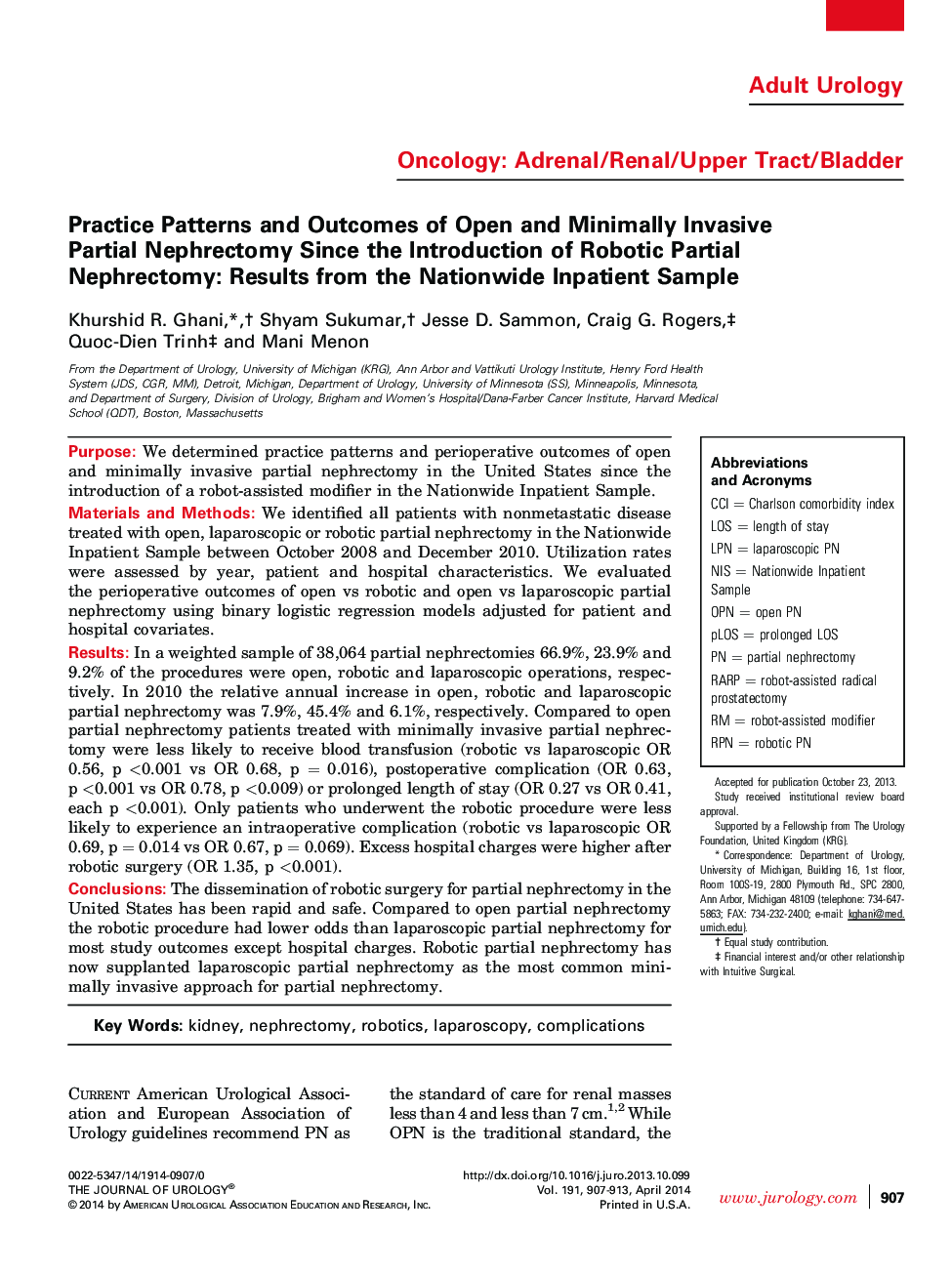| کد مقاله | کد نشریه | سال انتشار | مقاله انگلیسی | نسخه تمام متن |
|---|---|---|---|---|
| 3865489 | 1598906 | 2014 | 7 صفحه PDF | دانلود رایگان |
PurposeWe determined practice patterns and perioperative outcomes of open and minimally invasive partial nephrectomy in the United States since the introduction of a robot-assisted modifier in the Nationwide Inpatient Sample.Materials and MethodsWe identified all patients with nonmetastatic disease treated with open, laparoscopic or robotic partial nephrectomy in the Nationwide Inpatient Sample between October 2008 and December 2010. Utilization rates were assessed by year, patient and hospital characteristics. We evaluated the perioperative outcomes of open vs robotic and open vs laparoscopic partial nephrectomy using binary logistic regression models adjusted for patient and hospital covariates.ResultsIn a weighted sample of 38,064 partial nephrectomies 66.9%, 23.9% and 9.2% of the procedures were open, robotic and laparoscopic operations, respectively. In 2010 the relative annual increase in open, robotic and laparoscopic partial nephrectomy was 7.9%, 45.4% and 6.1%, respectively. Compared to open partial nephrectomy patients treated with minimally invasive partial nephrectomy were less likely to receive blood transfusion (robotic vs laparoscopic OR 0.56, p <0.001 vs OR 0.68, p = 0.016), postoperative complication (OR 0.63, p <0.001 vs OR 0.78, p <0.009) or prolonged length of stay (OR 0.27 vs OR 0.41, each p <0.001). Only patients who underwent the robotic procedure were less likely to experience an intraoperative complication (robotic vs laparoscopic OR 0.69, p = 0.014 vs OR 0.67, p = 0.069). Excess hospital charges were higher after robotic surgery (OR 1.35, p <0.001).ConclusionsThe dissemination of robotic surgery for partial nephrectomy in the United States has been rapid and safe. Compared to open partial nephrectomy the robotic procedure had lower odds than laparoscopic partial nephrectomy for most study outcomes except hospital charges. Robotic partial nephrectomy has now supplanted laparoscopic partial nephrectomy as the most common minimally invasive approach for partial nephrectomy.
Journal: The Journal of Urology - Volume 191, Issue 4, April 2014, Pages 907–913
